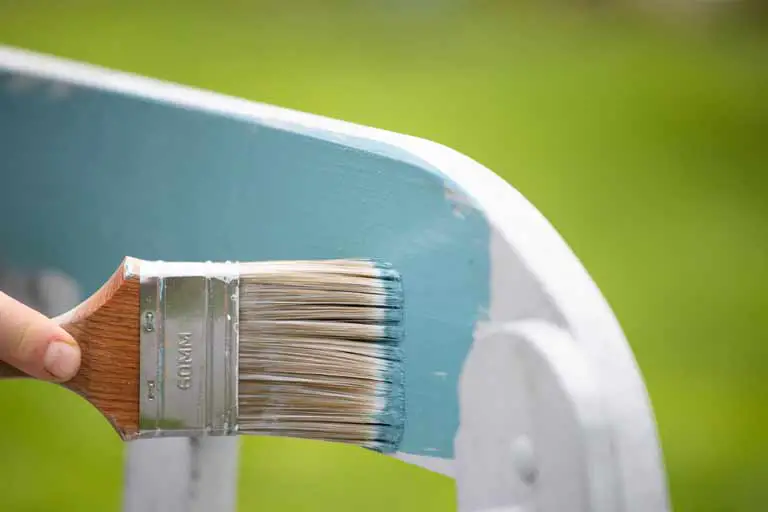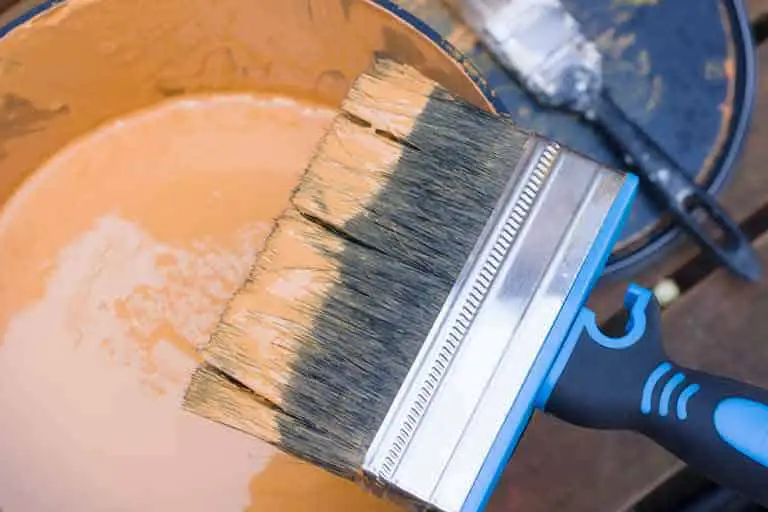
When tackling a home improvement project, you might be faced with choosing between different paint finishes, like chalk paint and limewash. While chalk paint and limewash may appear similar at first glance, there are significant differences between the two that you should consider before making your choice.
Chalk paint is a versatile, water-based paint known for its matte finish and ability to adhere to various surfaces without primer or extensive preparation. On the other hand, limewash is a traditional, breathable paint derived from crushed limestone that’s been fired at high temperatures. It gives walls a soft, old-world feel with its distinctive textured, matte appearance.
Although chalk paint and limewash share similarities in their matte and textured finishes, their composition and application are quite different. By understanding these differences, you can determine the type of paint that best suits your project, whether it’s a furniture makeover or adding a rustic touch to your home’s walls.
Understanding Chalk Paint and Limewash
Origins and Composition
Chalk paint and limewash are two distinct types of paint, each with unique origins and compositions. Chalk paint is a water-based paint that typically includes calcium carbonate (chalk), pigments for colour, and a binding agent such as acrylic or latex. The purpose of adding chalk to the paint is to create a more matte, velvety finish.
Limewash, on the other hand, derives from slaked lime or calcium hydroxide (lime putty). It is made by mixing water with lime putty and adding various natural pigments. This traditional paint has been used for centuries on plaster, porous masonry, stucco and brick.
Texture and Application
Concerning texture, chalk paint and limewash differ significantly. Chalk paint is known for its matte finish, heavy coverage, and ability to adhere well to various surfaces without much preparation. It can be easily applied using a brush or roller. It’s often sealed with wax or a topcoat for increased durability and protection.
Limewash presents a more textured, natural appearance when applied. Its texture is somewhat chalky but thinner than chalk paint. It is typically applied with a limewash block brush and can be built up in layers for varying degrees of coverage. As limewash dries, it creates a textured, slightly uneven, and subtly mottled patina, offering an organic, aged look. It also allows your walls to breathe, making them suitable for historic buildings or those with damp issues.
| Chalk Paint | Limewash |
|---|---|
| Uniform Matte Finish | Soft, Matte Appearance |
| Heavy Coverage | Buildable Coverage Over More Coats |
| Application: Brush or Roller | Application: Brush |

Primary Uses
Chalk paint is mainly popular for its use in furniture restoration and DIY projects. This is because it can be applied over existing finishes without the need for sanding or priming. This ease of use has made it a favourite amongst enthusiasts who want to revamp, repurpose, or personalise their furniture.
Limewash paint is better suited for exterior surfaces. It provides a natural, soft matte appearance that complements the character of older structures. It is also employed on interior walls to achieve a rustic or historic ambience. As limewash is resistant to mould, bacteria, and environmental damage, it serves as a sustainable and eco-friendly alternative to conventional paints.
Related article: 6 Reasons to Choose Limewash Over Modern Paint
Comparison of Chalk Paint and Limewash
Aesthetics and Finish
Chalk Paint: Chalk paint creates a rich, matte finish and is often used on furniture to create a distressed or aged look. It can be easily layered and sanded to create unique finishes on surfaces like walls, wood and metal. Chalk paint is typically applied using brushes or rollers, which can leave visible brush strokes for a more textured appearance.
Limewash: Limewash is a lime-based paint that produces a soft, chalky texture on walls and exteriors. It has a mottled, matte appearance, resulting in a natural colour variation and subtle movement. Limewash dries to create a weathered patina which softens and streaks with age. It can also be easily thinned with water to achieve a more translucent, Venetian plaster-like finish.
Surface Suitability
Chalk Paint: Chalk paint is versatile and can be applied to various surfaces, such as wood, metal, and masonry. It adheres well to most materials without the need for primer. However, you may require a coat of primer for certain surfaces to ensure better adhesion and durability. Chalk paint is primarily for interior use, though some exterior applications are possible with appropriate preparation.
Limewash: Limewash is best suited for porous surfaces like brick, stone, lime plaster, and lime render. It can also be used on porous interior surfaces. Limewash is not recommended for non-porous surfaces like smooth concrete or metal without additives to help adhesion. It provides excellent breathability, making it ideal for exterior and interior applications, especially on lime plaster or historic buildings.
Durability
Chalk Paint: Chalk paint is known for its durability when properly sealed. For furniture and other high-traffic areas, apply a wax or clear coat to protect the paint from damage and make it more wipeable. When applied on walls, the finish is generally durable. It may need occasional touch-ups, especially in high-traffic areas such as kitchens and bathrooms.
Limewash: Limewash has a longer lifespan compared to modern latex paint due to its high pH level and antimicrobial properties. Its breathability allows moisture to escape, preventing peeling and blistering while being naturally mould-resistant. Limewash is an eco-friendly option as it contains no VOCs (volatile organic compounds) and is made from crushed limestone, which is a sustainable resource. However, it may require occasional maintenance or reapplication over time as it naturally weathers and ages.
Related article: How Long Limewash Lasts & How Often it Should Be Reapplied

Choosing the Right Paint for Your Project
Room and Surface Considerations
When selecting the right paint for your project, the first thing to consider is the room and surface you’ll be painting. Remember that not all surfaces are suitable for every type of paint.
- For interior walls and ceilings, both chalk paint and limewash can be used. Chalk paint works well on wood, stone, and brick, while limewash makes a great option for lime plaster or porous masonry surfaces.
- For exterior projects, limewash is ideal as it is designed to withstand all weather conditions. Chalk paint is not recommended for exterior use.
- If you’re looking to paint furniture, chalk paint is a popular choice due to its ability to adhere to various surfaces easily.
Chalk paint and limewash are not the same, as they provide different finishes and are suitable for various applications. By considering the room and surface you’re working on and the desired finish and aesthetic, you can make an informed decision about which paint is best for your project.
Related article: What Surfaces Can Limewash be Used on? A Comprehensive Guide
Maintaining and Improving the Finish
Proper maintenance and care are crucial to ensure the longevity of your chalk paint or limewash finish.
Sealing the paint with clear wax or adding a protective topcoat is recommended for chalk paint to give it more durability. Be sure to clean surfaces gently using mild soap and water. Avoid harsh chemicals or abrasives that could damage the finish. Touch up any imperfections as needed with matching paint, and maintain the finish of your project with periodic wax applications.
Limewash finishes are more breathable as they allow moisture to escape, preventing mould and bacterial growth. It’s important to be gentle when cleaning limewashed surfaces, as the finish can wear away over time with aggressive cleaning. If limewash looks a bit weathered or worn out, one or two fresh coats will bring it back to life. Additionally, applying a fresh coat or two is a great way of getting rid of stubborn stains.
Following these tips and techniques will help you get the best results when using chalk paint or limewash for your projects, whether you’re a seasoned professional or a DIY enthusiast. Remember, always refer to the manufacturer’s guidelines for the product you’re working with to guarantee a successful application.
Key Takeaways
In comparing chalk paint and limewash, it’s important to understand the differences between the two. Chalk paint is characterised by its matte, chalky appearance. This makes it suitable for creating distressed or vintage effects on furniture and home décor items.
On the other hand, limewash is a breathable, soft, matte textured finish. It’s created by mixing lime putty, natural pigments and water. Creating an all-natural and eco-friendly paint. This finish is commonly used on walls and ceilings. Limewash is particularly used in heritage buildings or those aiming to create a rustic aesthetic.
As a user of these two finishes, you should know that their applications differ. Chalk paint is ideal for upcycling furniture, home accessories, and DIY projects, while limewash is perfect for achieving a soft, weathered patina on interior and exterior surfaces.
Additionally, when it comes to the environment, limewash is a more sustainable choice as it is made from natural, eco-friendly materials and does not contain VOCs (volatile organic compounds). In contrast, some chalk paints may contain these compounds, negatively impacting air quality and health.
While chalk paint and limewash may share some similarities in appearance, they are distinct finishes with unique applications and benefits. As you embark on your next decoration project, consider your desired aesthetic, the surface you’re working with, and any environmental factors to guide your decision between these two versatile options.

